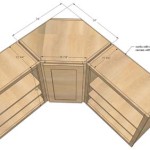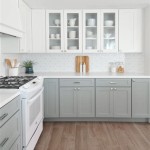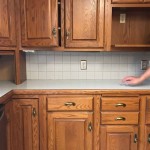```html
Kitchen Cupboard Organisers: Maximising Space and Efficiency
The kitchen, often considered the heart of the home, frequently becomes a storage challenge. Kitchen cupboards, in particular, can quickly descend into chaos, making it difficult to find necessary items and hindering efficient meal preparation. Effective kitchen cupboard organization is therefore essential for maintaining a functional and enjoyable cooking environment. The implementation of appropriate kitchen cupboard organisers is a key element in achieving this goal.
A well-organized kitchen cupboard system simplifies daily tasks, reduces food waste, and improves overall kitchen hygiene. Choosing the right organisers is not simply about aesthetics; it’s about understanding specific kitchen needs and selecting solutions that optimise available space. This article explores various types of kitchen cupboard organisers, discussing their benefits and suitability for different kitchen configurations.
Understanding Your Kitchen Cupboard Needs
Before investing in any storage solutions, a thorough assessment of existing kitchen cupboard contents is crucial. This evaluation should encompass the types of items stored (e.g., canned goods, spices, cookware, baking supplies), their frequency of use, and the current layout of the cupboards themselves. Identifying areas of inefficiency, such as deep, difficult-to-reach shelves or cluttered corners, allows for a targeted approach to organisation.
Consider the vertical space within cabinets. Stacking items without dividers often leads to instability and difficulty accessing items at the bottom. Similarly, neglecting the back of shelves can result in forgotten or expired goods. Categorizing items and grouping similar items together is a foundational step in creating a functional cupboard system. This might involve designating specific cupboards for baking supplies, pantry staples, or cookware.
Measuring the interior dimensions of cabinets is also paramount. Organisers must fit comfortably within the available space to avoid obstructing the closing of doors or drawers. Pay attention to the depth, width, and height of each shelf or section to ensure the chosen organisers are compatible. Consider any obstructions, such as pipes or electrical outlets, that might impact placement.
Types of Kitchen Cupboard Organisers
The market offers a wide array of kitchen cupboard organisers, each designed to address specific storage challenges. The selection should be guided by identified needs and the overall kitchen design.
Shelf Organizers: These are among the most versatile and widely used organizers. Options include:
Stackable Shelves: These create additional vertical storage space, allowing for better utilization of tall cabinets. They are particularly useful for storing plates, bowls, and canned goods. The adjustable nature of some models allows for customisation to varying item heights.
Under-Shelf Baskets: These attach to existing shelves, providing convenient storage for items like mugs, spices, or cleaning supplies. They maximize unused space and keep frequently used items readily accessible.
Corner Shelf Organisers: Corner cabinets often present a challenge. Lazy Susans or tiered corner shelves maximize accessibility to items stored in these typically hard-to-reach areas. These rotating platforms bring items to the front, minimizing the need to reach deep into the cabinet.
Drawer Organizers: Keeping drawers tidy is crucial for efficient kitchen operation. Consider these options:
Dividers: Adjustable or fixed dividers separate drawers into compartments, preventing items from rolling around and becoming disorganized. They are ideal for storing cutlery, utensils, and smaller kitchen gadgets.
Knife Blocks (In-Drawer): These provide a safe and space-saving alternative to countertop knife blocks. They keep knives securely stored and protected within a drawer, freeing up valuable counter space.
Spice Racks (In-Drawer): Angled or tiered spice racks keep spices organized and visible within a drawer. They allow for easy identification and retrieval of desired spices during cooking.
Door Organizers: The inside of cabinet doors often goes unused. These organisers attach to the door, providing additional storage for various items:
Spice Racks (Door-Mounted): These maximize vertical space and provide easy access to frequently used spices. They are particularly useful for smaller kitchens with limited cupboard space.
Cutting Board Holders: These keep cutting boards neatly organized and prevent them from cluttering countertops. They can also be used to store baking sheets or other flat items.
Wrap Dispensers: These hold rolls of plastic wrap, aluminum foil, and parchment paper, keeping them organized and readily accessible.
Pantry Organizers: Pantries, whether walk-in or cupboard-style, require strategic organisation to prevent food waste and maximize storage capacity:
Can Organisers: These tiered racks or dispensers keep canned goods organised and easily accessible. They prevent cans from being buried at the back of shelves and simplify inventory management.
Food Storage Containers: Transferring dry goods like flour, sugar, and pasta into airtight containers keeps them fresh and prevents pest infestations. Clear containers allow for easy identification of contents.
Pull-Out Shelves: These provide easy access to items stored deep within pantry cupboards. They eliminate the need to reach and rummage through shelves, making it easier to find what you need.
Selecting the Right Materials and Construction
The material and construction of kitchen cupboard organisers are significant factors to consider. Durability, ease of cleaning, and aesthetic appeal are all important aspects.
Metal: Chrome, stainless steel, and coated metal organisers are durable and easy to clean. They are resistant to rust and corrosion, making them suitable for kitchen environments. Metal organizers often offer a modern and sleek aesthetic.
Plastic: Plastic organizers are lightweight, affordable, and available in a wide range of colors and styles. However, they may not be as durable as metal options and can be prone to cracking or warping over time. Choose high-quality, BPA-free plastic for food storage.
Wood: Wooden organisers offer a warm and traditional aesthetic. They are durable and can be stained or painted to match existing kitchen décor. However, wood is more susceptible to moisture damage than metal or plastic and requires proper maintenance.
Construction Quality: Ensure that the organizers are well-constructed with sturdy joints and secure attachments. Check for sharp edges or rough surfaces that could cause injury. Look for organizers with non-slip feet or grips to prevent them from sliding around inside the cupboards.
The choice of material hinges on both personal preference and the expected usage. For high-traffic areas or items that require frequent cleaning, metal or high-quality plastic may be the more practical choice. Wood can be an excellent option for decorative storage or for items that are not subject to heavy use or moisture exposure.
Installation and Maintenance
Many kitchen cupboard organizers require minimal to no installation. Stackable shelves and drawer dividers typically simply need to be placed within the designated space. However, some organizers, such as door-mounted racks or pull-out shelves, may require more involved installation.
Installation: Always follow the manufacturer's instructions carefully when installing any kitchen cupboard organizer. Use appropriate tools and hardware to ensure a secure and stable installation. If you are unsure about the installation process, consider seeking professional assistance.
Maintenance: Regular cleaning is essential for maintaining the hygiene and functionality of kitchen cupboard organizers. Wipe down organizers with a damp cloth and mild detergent as needed. For metal organizers, use a stainless steel cleaner to prevent rust and corrosion. For wooden organizers, use a wood cleaner and polish to protect the finish.
Periodically inspect organizers for any signs of damage or wear and tear. Replace damaged or worn organizers to prevent them from becoming unstable or unsafe. Re-evaluate the organization system periodically, adjusting it as needed to accommodate changing storage needs and preferences. As cooking habits evolve, so too should the system of organisation used to support it.
Implementing effective kitchen cupboard organisers is a continuous process. By carefully assessing kitchen needs, selecting appropriate organizers, and maintaining a consistent cleaning routine, it's possible to create a functional and efficient kitchen storage system that simplifies daily meal preparation and enhances the overall cooking experience.
```
60 Clever Cabinet Organization Tips To Double Your Storage 2024

How To Organise Your Kitchen Fridge Cupboard Storage Ideas Matalan

Addis Under The Sink Organiser 506881

Plastic Kitchen Cupboard Organisers Set Of 3 Scott S Stow

1 Tier Kitchen Cupboard Organiser Shelf Storage Support Pantry Stand Jar Rack

12 Ways To Declutter Your Kitchen Counters And Cupboards Xtraspace

15 Kitchen Cabinet Organizers That Will Change Your Life Family Handyman

25 Really Clever Kitchen Cupboard Storage Ideas To Try

Kitchen Cupboard Organisers Archipro Au

This Is How To Organise Your Kitchen Cupboards Plastic Box
Related Posts








